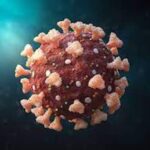“The goal of therapy for KD is to manage symptoms to maintain cardiovascular health”
New Delhi, June 1, 2018:
In what can be called a rare but rapidly spreading disease, the Kawasaki Syndrome or Disease (KD) continues to remain one of the largely undiagnosed conditions in Indian children, primarily due to lack of awareness amongst pediatricians. KD is believed to be the commonest vasculitic disorder of children. Incidence rates as high as 60 to 150 per 100,000 children below 5 years of age have been reported from several countries. The IMA indicates that untreated children are at risk for developing potentially fatal coronary artery aneurysms.
KD is a condition that causes inflammation in the walls of medium-sized arteries throughout the body, including the coronary arteries, which supply blood to the heart muscle. It is also called mucocutaneous lymph node syndrome because it also affects lymph nodes, skin, and the mucous membranes inside the mouth, nose and throat.
Speaking about this, Padma Shri Awardee Dr K K Aggarwal, President Heart Care Foundation of India (HCFI) said, “Although the exact cause of KD is not known, it is not thought to be a contagious disease. Some theories link KD to bacteria, viruses or other environmental factors, but none has been proved. Certain genes can increase a child’s susceptibility to KD. This disease is one of the leading causes of acquired heart disease in children. However, lasting damage can be prevented with effective treatment. Some of the heart complications that may develop as a result of KD include inflammation of blood vessels (vasculitis), usually the coronary arteries, that supply blood to the heart; inflammation of the heart muscle (myocarditis); and heart valve problems. As per the AHA, the diagnosis of incomplete or atypical KD should be considered in any infant or child with prolonged unexplained fever, fewer than 4 of the classical clinical findings, and compatible laboratory or echocardiographic findings.”
Some of the classic symptoms of KD apart from fever include redness in both eyes; a very red, swollen tongue; redness of the palms or soles; skin peeling; a rash; and swollen lymph nodes. The symptoms usually appear in three phases.
Adding further, Dr Aggarwal who is also the Group Editor of IJCP, said, “Treatment should begin as soon as the signs and symptoms appear, preferably while the child still has a fever. The goals of initial treatment are to lower fever and inflammation and prevent heart damage. The recommendations may include infusion of an immune protein (gamma globulin) through a vein (intravenously) to lower the risk of coronary artery problems; and high doses of aspirin to help treat inflammation.”
The goal of therapy is to prevent thrombosis and myocardial ischemia while maintaining optimal cardiovascular health. Risk-stratification of patients for effective long-term evaluation and management should be done according to the relative risk of myocardial ischemia, either related to coronary artery thrombosis or stenoses/occlusions. The guidelines also recommend development of effective and collaborative programs between pediatric and adult cardiology providers for effective long-term management of the patient.







